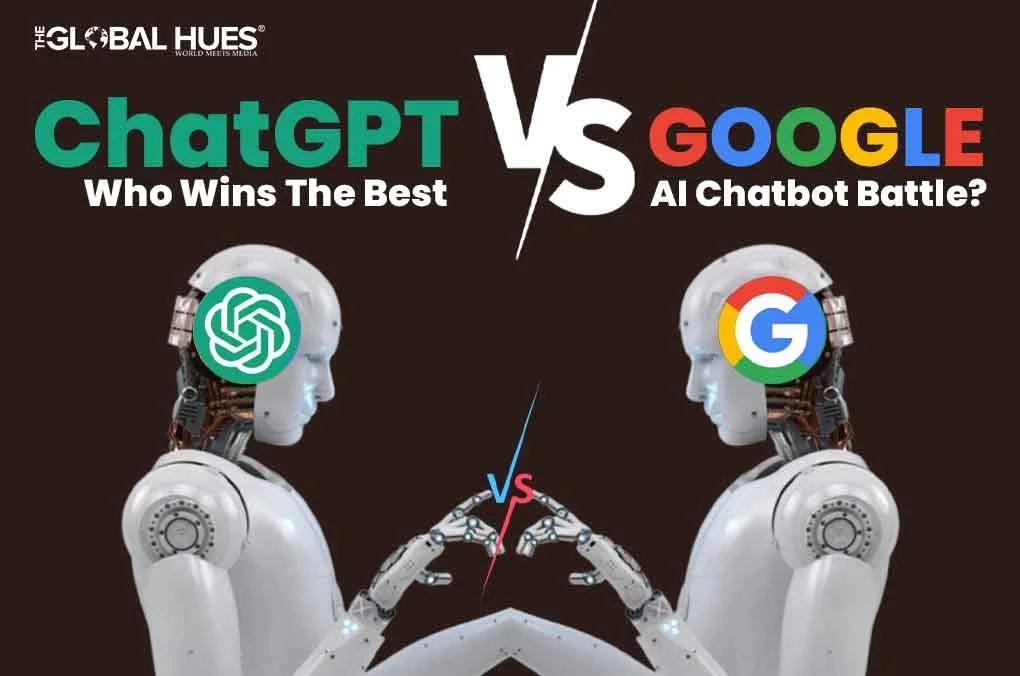‘Hey!’ I’ve been hearing a lot about ChatGPT and Google Bard. What are they? asked Shreya to her colleague Akshita while having lunch in the office.
‘Ah, I knew you’d bring this up!’ Akshita chuckled and replied, “ChatGPT and Google Bard both are large language models. They communicate and generate human-like text to a wide range of questions.”
‘Wow! That’s impressive. But which one is better?,’ asked a curious Shreya.
“That’s a tricky question but I’ll do my best to answer. Bard is trained on Infiniset, a dataset designed specifically for conversations and dialogue while ChatGPT’s training is focused on a pre-defined set of data that hasn’t been updated since 2021. So, if you have to search current happenings of the world, you know which chatbot to prefer,” said Akshita.
“Yeah! But should I trust their answers?” Shreya inquired further.
“Since both are still under development, they’re not flawless. They might sometimes provide inaccurate, biased, or repetitive answers. So, it’s better to always fact-check from other reliable sources too,” reiterated Akshita.
As the lunch break came to an end, Shreya and Akshita returned to their work.
But that’s not it…
It’s a head-to-head comparison between ChatGPT and Google Bard. Let’s try to understand this.
| Chatbot | ChatGPT | Bard |
| Created by | OpenAI (Microsoft) | |
| Internet Access | Relies on a dataset that has information until the latter part of 2021. Therefore, it may encounter difficulties in delivering current and recent information | Draws responses from the internet in real time. Each response from Bard is accompanied by a small Google Search icon. When you click on this icon, it offers suggestions for related queries that you can tap on to perform a Google search |
| Pricing | ChatGPT is available to all users for free, while ChatGPT Plus is billed at $20/month. It includes additional benefits like access during peak times, faster response times, priority access to new features, and use of GPT-4 | Bard is absolutely free for users who have access |
| Language | English, Spanish, Korean, Mandarin, Italian, Japanese | English |
| Language Model | GPT-3.5/GPT-4 (ChatGPT Plus) | LaMDA |
| Data Sources | Pre-trained on an extensive collection of data sources, including Common Crawl, articles, books, and Wikipedia | Trained using “infiniset.LaMDA” and incorporates data from Common Crawl, articles, books, and Wikipedia, along with the ability to access real-time information from Google |
Here’s what Bard can do that ChatGPT can’t?
While ChatGPT and Bard both have their merits and demerits, can Google’s chatbot overshadow ChatGPT?
-
Comprehensive Information through the Internet
ChatGPT does not possess internet connectivity. To access the internet, users may require a web-browsing feature. However, Google Bard has built-in internet access, providing it with an advantage over ChatGPT.
Bard has been trained on an extensive dataset comprising text and code, including information obtained from the internet, thus enabling the chatbot to offer comprehensive and informative responses to questions asked by the users.
Unlike ChatGPT, Bard can provide up-to-date news highlights and retrieve information directly from the internet.
-
Integration with Gmail
The integration of Bard with Gmail provides a noteworthy benefit, considering the extensive user base of over 2 billion people who rely on Gmail for their communication and marketing needs. Incorporating an AI chatbot like Bard directly into the email service introduces new opportunities for email interactions and has the potential to improve the overall user experience.
While ChatGPT offers different extensions to enable similar functionalities, Bard inherently includes export functionality as a default feature, thus giving it an edge over ChatGPT.
-
Coding Capabilities
Bard again takes an edge over ChatGPT by providing support for coding tasks. It has the ability to assist with more than 20 programming languages, including C++, Python, Java, JavaScript, TypeScript, and more. Bard can aid professionals in tasks such as code generation, explanation, and debugging.
On the other hand, while ChatGPT does possess coding capabilities and has been trained in languages like Python, JavaScript, C++, C#, Java, Swift, TypeScript, SQL, Ruby, PHP, Go, and Shell, it may not offer the same level of support for coding tasks as Bard does. One would need to use OpenAI’s Codex for additional coding-related tasks.
-
Availability of Plugins
Google has revealed that Bard will incorporate various plugins, including Walmart, Spotify, Adobe Firefly, Uber Eats, and several other Google Apps.
Similar plugins have been introduced by OpenAI for ChatGPT in March of this year. However, the difference lies in accessibility. ChatGPT’s plugins are exclusively available to ChatGPT Plus subscribers, who pay a monthly premium fee of $20.
-
Voice Search
Another feature via which Bard is overtaking its peers is its ability to let users interact through voice input. This feature offers a convenient method to receive responses, particularly when multitasking or when typing is an issue. By providing voice interaction capability, Bard gains a competitive advantage over not only ChatGPT but also many other similar systems.
-
Exporting in Docs and Gmail
Bard provides the convenience of instantly exporting results to Gmail and Docs. Users can share the responses with their friends and colleagues, whenever needed, by directly exporting them to these platforms. This feature simplifies the sharing of information and makes the task of composing emails more convenient and less time-consuming.
OpenAI has also introduced a similar export option in the settings. Users can export their account details and conversations, which will be sent to their registered email as a downloadable file. However, it’s worth noting that the processing time for this export may take some time.




